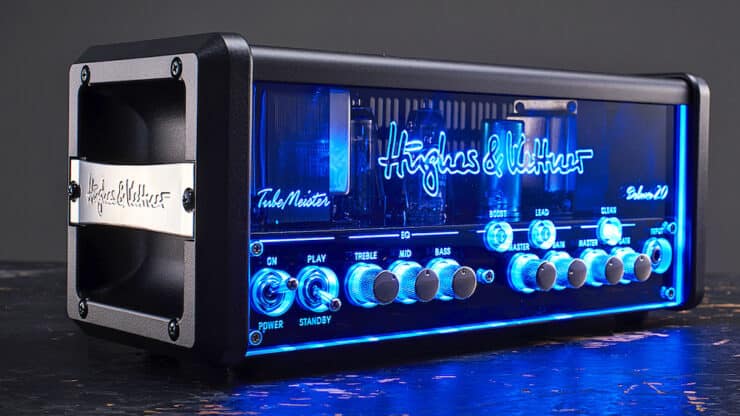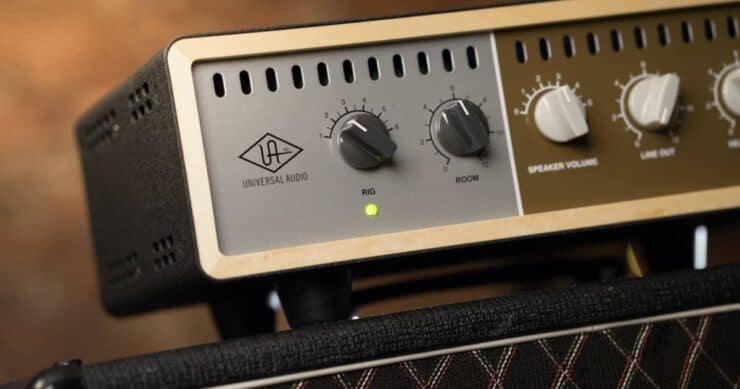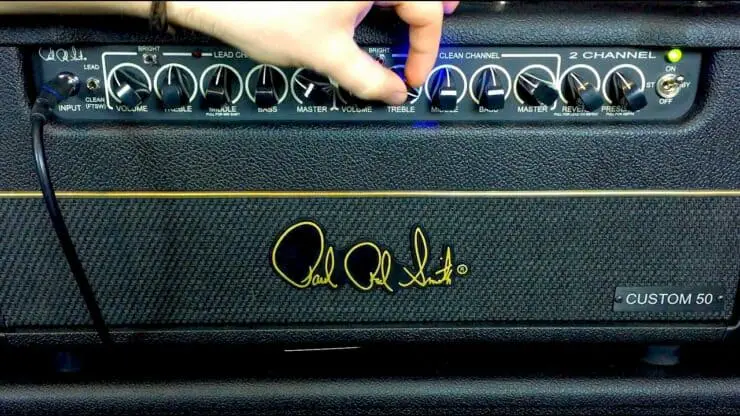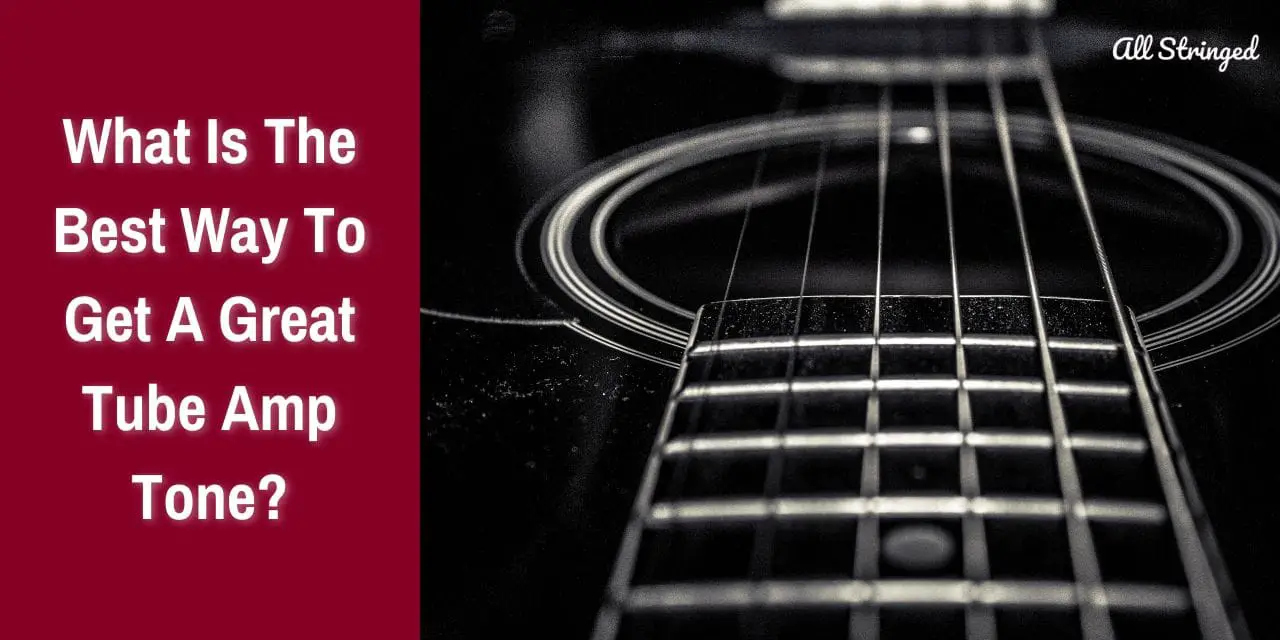Guitar players, are you looking to get that great tube amp tone? Look no further! In this article, we’ll explore the best ways to get that realistic tube amp sound. From the types of tube amps to the best pedals to use with them, you’ll learn everything you need to know to achieve the best tube amp tone. So, if you’re a guitar player ready to take your playing to the next level, read on!
What is a tube amp?
Tube amps are a type of audio amplification technology that uses vacuum tubes or valves for amplifying the electrical signal. These amps have been around for several years and continue to be highly regarded for their impressive sound characteristics.
A tube amp typically consists of vacuum tubes that amplify the audio signal in an analog manner. It’ll typically include several stages of amplification, including preamp and power amp sections, for boosting the weak audio signal from a source and delivering it to the speakers or headphones with increased power and fidelity. The vacuum tubes play a key role in shaping the sound, providing a warm, rich, and harmonically pleasing tone.
>>> Click here to read our review about the Top 15 Best Tube Amps <<<
Some of the primary benefits of tube amps are –
#1. Smooth overdrive and saturation
Tube amps are widely regarded for their ability to produce desirable overdrive and saturation when pushed to higher volume levels. The way tubes or valves handle signal clipping and distortion is often preferred by musicians and guitarists, as it tends to have a more pleasing and natural tone in comparison to solid-state amps. Tube amps are also renowned for their sweet and musical backup. This can be harnessed for expressive guitar solos or rich, saturated tones.
#2. Vintage aesthetic and collector’s value
Tube amps tend to carry a vintage charm and aesthetic appeal that often resonates with many music enthusiasts. The nostalgia and allure of classic tube amps contribute to their collector’s value and desirability among audio aficionados.
#3. Dynamic response
Tube amps are known for their exceptional dynamic response. They’re able to accurately capture the nuances and subtleties of the audio signal, especially during transient moments and varying volume levels. Tube amps excel at preserving the delicate details and intricacies of the music, which results in a more expressive and engaging listening experience.

#4. Soundstage and imaging
Tube amps can greatly contribute to a wider soundstage and enhanced imaging. The added harmonic content and subtle distortion generated by the vacuum tubes can create a sense of depth and spaciousness in the audio presentation. This will allow the listener to experience a more immersive and realistic soundstage with vocals and instruments precisely placed within the stereo field.
#5. Harmonic richness and warmth
Another celebrated quality of tube amps is their ability to produce a warm, rich, and harmonically complex sound. The vacuum tubes introduce a natural compression and distortion that can add depth and character to the audio signal. Many musicians and audiophiles appreciate the smooth and musical tones that tube amps deliver, especially in the realm of guitar amps.
#6. Longevity and reparability
Tube amps are widely known for their longevity and durability. Although vacuum tubes aren’t immune to wear and tear, they are still relatively easy and expensive to replace compared to their solid-state counterparts. Moreover, many tube amp users also appreciate the reparability of these amps, as their simple circuit designs and modular nature will make it easier to diagnose and resolve issues.
What is the best way to get a great tube amp tone?
Getting a great tone from a tube amp involves more than simply plugging in and turning up the volume. It’ll require you to understand different things, as there are numerous factors that play a key role in shaping the sound and unlocking the true potential of your tube amp. Here is how you can get the best out of your tube amp and get a great amp tone –
#1. Set the gain and volume
The gain and volume controls on a tube amp are interconnected, and they can significantly impact the overall tone. Here is how you can optimize these settings –
First, you need to set the gain to a level that perfectly matches the desired amount of distortion or overdrive. Lower gain settings will produce cleaner tones, whereas higher settings will introduce more saturation and distortion.
Once the gain has been set, you should adjust the volume control for achieving the desired loudness. You must be mindful of the amp’s power and the venue’s requirements. Lower volume settings could result in a cleaner and more dynamic tone, whereas higher settings can push the tubes into natural compression and saturation.
Lastly, you should find the right balance between gain and volume, as it’ll be key to obtaining the desired tone. You must experiment by tweaking both controls incrementally until you’ve achieved the desired level of saturation, clarity, and responsiveness.
#2. Adjusting the tone controls
Most tube amps come equipped with tone controls such as bass, treble, and mid-knobs or switches. These controls will allow you to easily shape the frequency response of your tube amp and tailor the tone to your liking. Here is how you can adjust the tone controls of a tube amp –
Start with all tone controls set to the middle or neutral position (typically marked as 12 o’clock). This will provide a balanced starting point. You must adjust one control at a time and hear its impact on the overall sound. For instance, increasing the bass control could add warmth and low-end punch, whereas boosting the treble control could enhance presence and clarity.
Play around with the tone control for finding the right balance. Listen carefully to how each adjustment is affecting the overall tone and make incremental changes until you’ve got the desired tonal characteristics.
#3. Use the right type of speaker
The choice of the speaker will also greatly influence the tone and overall performance of the tube amp. There are many things that you should consider when choosing the speaker including the size, wattage rating, materials, and more.
Different speakers with different sizes and different wattage ratings offer distinct tonal characteristics and volume capabilities. Larger speakers tend to offer more low-end response, whereas smaller speakers can enhance mid-range clarity. Make sure that the speaker’s wattage rating is capable of handling the power output of the amp to prevent damage.
The construction and materials used in the speaker can also impact the tonal response. Factors like cone material, magnet type, and voice coil design will contribute to the speaker’s overall sonic signature. You can experiment with different speaker types, as it’ll help you find the tone that perfectly suits your preferences.
Additionally, it is important that you consider the compatibility between your tube amp and speaker. Some amps come with specific impedance requirements, so you should ensure that the speaker’s impedance matches that of the amp for optimal performance.
Different types of tube amps
Tube amps are particular favorites among musicians and guitarists as they offer distinct sound and tonal characteristics. Within the realm of tube amps, there are different configurations available, with each one offering unique benefits and versatility. Here are the three main types of tube amps that you can go for –

#1. Tube combo amps
Tube combo amps are all-in-one units that combine the amplifier and speaker in a single enclosure. They are quite popular among musicians for their convenience, portability, and simplicity. These amps integrate the amplifier circuitry and speaker within one enclosure, which makes them compact and easy to transport. Moreover, they are ideal for rehearsals and gigs in small venues where portability is needed.
Combo amps also feature a front panel with controls adjusting volume, gain, tone, and other parameters. This centralized control layout will allow for quick and easy adjustments on the fly. Tube amps are also designed with a specific speaker that perfectly complements the amp’s characteristics, ensuring optimal tonal performance. The speaker’s size and construction will greatly impact the amp’s overall sound.
Moreover, these amps are suitable for various music genres and playing styles, from clean and articulate sounds to overdriven and distorted tones. They can be used in a wide range of settings, including studio recordings, practice sessions, and live performances.
#2. Tube head amps
Tube head amps consist of the amplifier circuitry without an integrated speaker. These amps are designed to be paired with external speaker cabinets, as they offer greater flexibility and customization. Tube head amps come with a modular setup, which allows you to choose and connect different speaker cabinets as per your preference. This versatility will allow you to create diverse tones by combining different speakers.
Tube head amps often come with additional features for controlling external effects pedals, footswitches, and switching between different channels or settings. This flexibility will allow you to get more precise control over the amplifier’s functionality. Moreover, they come in a wide range of power ratings, from low-wattage models that are suited for practice sessions to high-wattage options ideal for playing in larger venues. Musicians and guitarists can select the appropriate power level depending on their playing requirements.
Tube head amps will give you the freedom to experiment with different speaker cabinets, allowing you to tailor your tone to specific preferences. You will be able to mix and match different speaker configurations to get the desired sound.
#3. Tube cabinet amps
Tube cabinet amps refer to the speaker enclosures used with tube head amps. These consist of one or more speakers housed within a cabinet. They come in various speaker configurations including – single-speaker cabinets (1×12), dual-speaker cabinets (2×12), and larger setups such as four-speaker cabinets (4×12). Each configuration will offer different tonal characteristics and dispersion patterns.
Tube cabinet amps come designed to handle specific power levels and impedance ratings. It is important that you match the cabinet’s specifications with the tube head amp for ensuring proper power transfer and avoid damaging the speakers.
The speaker cabinet plays a key role in shaping the overall sound and tone. Factors like cabinet size, speaker types (ceramic or alnico magnets), and construction materials can impact the tube cabinet amp’s sonic characteristics, including high-frequency articulation, bass response, and mid-range clarity.
Tips to follow to get the best tube amp tone
If you’ve got a tube amp, you’ll know how capable it is of producing tremendous tone. However, it bogs down over time, and you start thinking that maybe this tone is not what you are looking for. If this happens, you should not worry yet. Do not start panicking and planning on buying a new tube amp yet. There are ways you can still get the best tone out of your tube amp. Here are some of the tips that you will need to follow to get a great tube amp tone.
Some of these tips may fall under the category of mods, as you’ll need a professional to help you out. Moreover, when dealing with high-voltage equipment, you will need to be alert. There are some tips that you can carry out yourself without any worries. However, all of these tips will definitely save the relationship between you and your tube amp and help you get the great tone that you’re after.

#1. Get biased
The power tubes of an amp are designed to run within specific parameters. There will be a bias range (generally cold to hot) in which your amp’s tubes can safely operate. To obtain clean headroom and punchy dynamics, you should try to have them biased toward the cooler end. However, you should be aware that if you are setting it too cool, the amp might sound bland and sterile.
If you’re looking for a power tube overdrive and a softer dynamic response, going for a hotter bias will suit you more. But remember that excessively hot bias will likely shorten the tube’s life. It is a job that should be left to a professional, but you must discuss your preferences with them beforehand.
#2. Know the right tone controls
The perfect amp settings that you’ve carefully dialed in at home will rarely translate to other environments. Say that you’re playing in an echoey and bright-sounding room, you’ll likely have to reduce the treble and response. Meanwhile, if your tube amp is tucked into a corner, the bass and middle controls might minimize boom and clutter.
Volume levels can greatly affect the frequency perception, so treble could be strident at high volume while bass might require a boost at low volume. You shouldn’t be afraid of using your ears and your equalization controls for optimizing the tone in different environments.
#3. Substitute one tube for another
Unlike power tubes, preamp dual-triodes can actually be substituted for one another. The ECC83/12AX7 are the most common ones. Many Tweed Fender circuits have been designed to get a lower gain, with 12AY7/6072a being in the first position. Moreover, you can substitute a 12AX7 to get additional gain.
If you’re struggling to get clean headroom, you should try using a 12AY7 instead of a 12AX7. If this proves to be too underpowered, you should use a 5751 with a gain factor of 70. Turn off the amp when you are swapping tubes and avoid bending the pins.
#4. Swap the speaker
Guitar speakers come with distinct sonic attributes that are typically attributed to their midrange voicing. They are known to exert a dramatic effect on the tone of the guitar. Some of them are quite bright, and it opens dark-sounding amps, but they may sound harsh when used with naturally bright amps.
Some of them are loose and flabby, whereas others are engineered to deliver bass definition with attenuated treble. If you use high-sensitivity speakers, it could make your amp sound louder and offer more clean headroom for lower-powered amps. However, you will need to combine the tube amp and speakers with complementary characteristics.
#5. Tighten up the bass
Most vintage-style tube amps work quite well at lower volume levels and in recording situations. However, they end up getting over-compressed and saggy once they are cranked up to gig volume.
Often, these tube amps come with relatively puny filter caps that are rated at 8µF or 16 µF. Increasing the value to 22µF is a common modification that can tighten up the bass response and reduce compressions. However, you must get it checked with a qualified technician before you modify your tube amp.
#6. Rectifier swap
Rectifier tubes can be used for converting the AC voltage into DC, and identical rectifiers can output different voltages. Higher HT voltage could make the tube amp cleaner and punchier, whereas lower voltage will lead to more sag and earlier overdrive. To achieve the former, you should get the amp checked and install a better tube rectifier.
Sometimes, a 5Y3 rectifier can be replaced with GZ34/5R4 for increasing HT voltage. Meanwhile, a 5V4 or 5Y3 can be used instead of a GZ34/5AR4 for lower voltages. Consult a technician, as they’ll ensure your tub amp can cope with the rectifier’s current draw and verify the bias once you’ve swapped it.
#7. Use bright caps
During the 50s, Fender introduced “bright caps” and later turned it into a switchable feature. Bright caps function similarly to a treble bleed capacitor and can be used on different Fender, Matchless, Marshall, and Mesa/Boogie amps.
Interestingly, excessively bright amps might benefit from getting the bright cap modified or removed altogether. Meanwhile, naturally dark amps like Vintage Vox models can be opened by if you get one fitted.
#8. Take advantage of attenuation
Most tube amps have a sweet spot that can be achieved once the volume reaches a certain level. Unfortunately, this level is often too high for home and stage use as well.
Overdrive and compressor pedals can help compensate for this to an extent, but it isn’t the same. An attenuator could be the solution. As long as you’re not using it to make the amp whisper-quiet, you’ll be able to enjoy the tube amp’s full-fat saturation without affecting the tone.
#9. Avoid using dodgy tubes
You might have noticed any odd metallic, high-pitched ringing coming from the speakers when playing loud? If yes, then one or more tubes might be microphonic. It is noticeable with preamp tubes that are more toward the front end of the signal path, as every subsequent stage will amplify the noise.
You must remove any metal coverings, turn the amp on, and gently tap each tube with a wood or plastic chopstick. Microphonic tubes will amplify the tapping such that you can identify the ones that need replacing.
#10. Use quality cables
Assuming that you aren’t using a wireless transmitter, you will need to use a cable to connect your tube amp and guitar. Unlike speaker cables, guitar cables are shielded. The two basic requirements will be low capacitance for minimizing treble loss and low resistance for retaining signal strength. A decent-quality cable will be an upgrade for all the guitars. As long as you are not falling for the snake oil and pseudo-science, you won’t have to spend a fortune.
FAQs
What is a tube amp, and why is it popular for guitar tone?
A tube amp is an amplifier that uses vacuum tubes to produce sound. Tube amps are often used for guitar because they are known for their warm and rich sound. They are also very responsive to the player’s touch and allow for more dynamic expression.
What type of tubes should I use for a great tube amp tone?
The type of tubes you use in your amp will have an effect on the tone. Different types of tubes will produce different tonal characteristics, so it’s important to choose the right type of tubes for the sound you are trying to achieve.
What other factors should I consider getting a great tube amp tone?
In addition to the type of tubes you use, there are other factors to consider when trying to get a great tube amp tone. This includes the type of speakers you use, the type of cabinet and its design, the type of pickups used in your guitar, and even the type of strings you use. All of these factors can contribute to the overall sound of your amp, so it’s important to consider all of them when trying to get the best tone possible.



